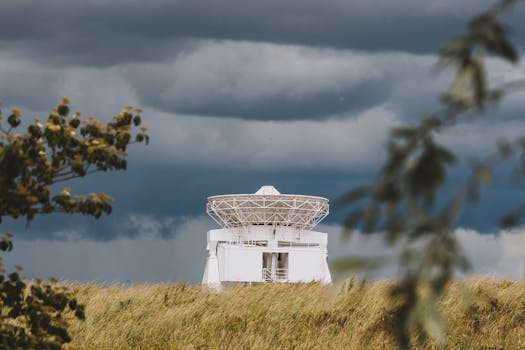
GEO satellites, or Geostationary satellites, are a type of satellite that orbits the Earth at an altitude of approximately 36,000 kilometers, allowing them to remain stationary in the sky relative to a fixed point on the Earth’s surface. GEO satellites have revolutionized global communication and navigation, providing a wide range of services including television broadcasting, telecommunications, and weather forecasting. The focus keyword of this article is GEO satellites, and we will explore their history, applications, and future developments.
The concept of GEO satellites was first proposed by science fiction writer Arthur C. Clarke in 1945, and the first successful launch of a GEO satellite was achieved by the Soviet Union in 1961. Since then, GEO satellites have become an essential part of modern life, enabling global communication, navigation, and remote sensing. One of the primary applications of GEO satellites is television broadcasting, where they transmit signals to Earth-based receivers, allowing for global coverage and access to a wide range of channels.
In addition to television broadcasting, GEO satellites also play a critical role in telecommunications, providing internet connectivity, voice communications, and data transmission services. They also enable weather forecasting, allowing meteorologists to monitor global weather patterns and predict severe weather events. Furthermore, GEO satellites are used for navigation, providing location information and timing signals for GPS and other satellite navigation systems.
The development of GEO satellites has also led to significant advancements in remote sensing, enabling the monitoring of Earth’s climate, natural resources, and natural disasters. GEO satellites can detect changes in ocean currents, sea level rise, and ice sheet melting, providing valuable insights into the impacts of climate change. They also enable the monitoring of crop health, soil moisture, and forest cover, allowing for more effective management of natural resources.
In conclusion, GEO satellites have revolutionized global communication and navigation, providing a wide range of services that have transformed modern life. As technology continues to evolve, we can expect to see even more innovative applications of GEO satellites, from advanced weather forecasting to enhanced navigation and remote sensing capabilities.
The future of GEO satellites looks bright, with ongoing research and development focused on improving their performance, efficiency, and sustainability. The use of GEO satellites in conjunction with other satellite technologies, such as Low Earth Orbit (LEO) satellites and Medium Earth Orbit (MEO) satellites, will enable even more advanced services and applications. As the demand for global communication and navigation continues to grow, GEO satellites will remain a vital component of modern infrastructure.
Another area where GEO satellites are expected to play a significant role is in the development of 5G networks. The use of GEO satellites in 5G networks will enable the provision of high-speed, low-latency connectivity to remote and underserved areas, bridging the digital divide and enabling new applications and services. The integration of GEO satellites with 5G networks will also enable more efficient use of spectrum, reducing interference and improving overall network performance.
The use of GEO satellites in emergency response and disaster relief is also becoming increasingly important. GEO satellites can provide critical communication services in the aftermath of a disaster, enabling emergency responders to coordinate their efforts and provide aid to affected areas. They can also be used to monitor the extent of damage and provide valuable insights into the impact of the disaster, enabling more effective response and recovery efforts.
In terms of challenges, GEO satellites face significant technical and regulatory hurdles. The increasing congestion of the geostationary orbit, combined with the growing demand for satellite services, has led to concerns about interference and spectrum management. Additionally, the regulatory framework governing the use of GEO satellites is complex and often fragmented, requiring international cooperation and agreement to ensure the long-term sustainability of these critical assets.
Despite these challenges, the benefits of GEO satellites far outweigh the costs. They have revolutionized global communication and navigation, enabling new applications and services that have transformed modern life. As technology continues to evolve, we can expect to see even more innovative uses of GEO satellites, from advanced weather forecasting to enhanced navigation and remote sensing capabilities.
The economic benefits of GEO satellites are also significant, with the global satellite industry generating billions of dollars in revenue each year. The use of GEO satellites in telecommunications, television broadcasting, and navigation has created new opportunities for economic growth and development, enabling businesses and individuals to access new markets and services.
In conclusion, GEO satellites have played a critical role in shaping modern communication and navigation systems. Their impact on global communication, navigation, and remote sensing has been profound, enabling new applications and services that have transformed modern life. As technology continues to evolve, we can expect to see even more innovative uses of GEO satellites, from advanced weather forecasting to enhanced navigation and remote sensing capabilities.
The development of GEO satellites has also led to significant advancements in space technology, enabling the development of more advanced satellite systems and applications. The use of GEO satellites in conjunction with other satellite technologies, such as LEO satellites and MEO satellites, will enable even more advanced services and applications, from global communication and navigation to remote sensing and weather forecasting.
Overall, the importance of GEO satellites cannot be overstated. They have revolutionized global communication and navigation, enabling new applications and services that have transformed modern life. As technology continues to evolve, we can expect to see even more innovative uses of GEO satellites, from advanced weather forecasting to enhanced navigation and remote sensing capabilities.




